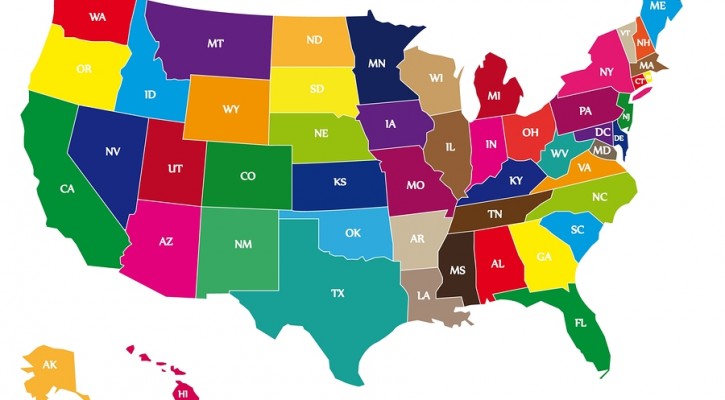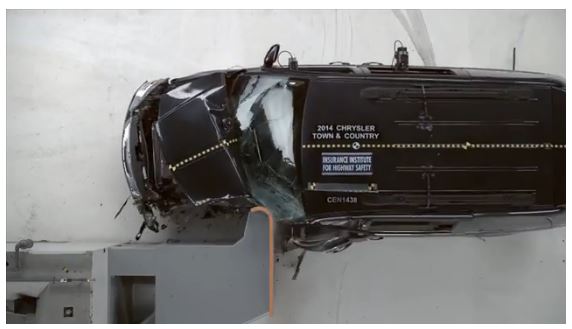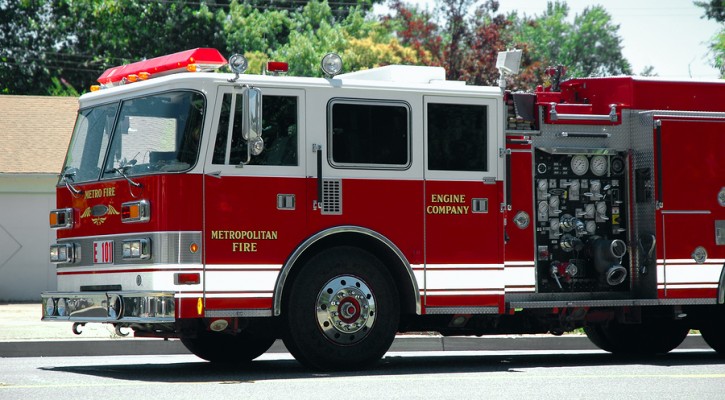Category Archive: Safe Driving

Which States Have The Worst Drivers?
December 11, 2014
The worst drivers by state list has been updated by the folks at Car Insurance Comparison.com. No matter how safe a driver you may be, you’re still at risk of having a crash if the other drivers in your state drive badly and, unfortunately, the price you pay for insurance is determined by that driving environment. The worse the driving situation, the more your insurance will cost.
How worst drivers score was determined
To determine each state’s rating, the surveyors looked at the latest data from the National Highway Traffic Safety Administration (NHTSA) in the following categories:
- Fatalities Rate per 100 Million Vehicle Miles Traveled
- Failure to Obey (Percentage of Fatal Crashes that involved Traffic Signals, Not Wearing Seat Belts, and Driving with an Invalid Driver License)
- Drunk Driving (Percentage of Fatal Crashes that Involved Alcohol)
- Speeding (Percentage of Driving Fatalities that were Speed-Related)
- Careless Driving (Pedestrian & Bicyclist Fatalities per 100,000 Population)
The data was tabulated into one single score per state with the worst states receiving the lowest score.
To see where your state ranked and which states scored worst, read: Worst Drivers By State

Crash Avoidance Technologies Not Always Effective
December 11, 2014
Crash avoidance technologies aren’t always effective according to research conducted by the American Automobile Association (AAA). The automotive industry and insurance companies have indicated that new crash avoidance technologies that are being introduced in newer model cars have great potential to save lives and reduce insurance rates but, as with all new technologies, there are limitations. The AAA researchers looked at blind spot avoidance and lane departure technologies and found that, under certain conditions, they failed to warn the driver in time to avoid a crash.
In the case of blind spot monitoring systems, researchers found:
- Blind-spot monitoring systems had difficulty detecting fast-moving vehicles – such as when merging onto a busy highway. Alerts were often provided too late for evasive action.
- Motorcycles were detected by blind-spot monitoring systems 26 percent later than passenger vehicles.
With lane departure systems, the research indicated that:
- Road conditions were often a problem for lane-departure warning systems. Worn pavement markers, construction zones and intersections can cause the lane-departure warning system to lose track of lane location.
- The litany of alerts and warnings could be confusing. Auditory, visual or haptic responses – or a combination – could be similar to other advanced driver assistance features that delivered the same warnings.
All of the new systems do have the potential to prevent crashes and save lives but, until the systems evolve, they should still only serve as an aid to drivers. Drivers still need to be aware of the driving situation and rely on the crash avoidance systems only as a backup.
For more information, read: New Car Technologies Still Working Out the Kinks, Says AAA Assessment

46.3 Million Expected On Roads Thanksgiving Weekend
November 26, 2014
This Thanksgiving weekend, the American Automobile Association (AAA) anticipates that 46.3 million people will be out on the roads. With gas prices lower than they have been in years, most Americans will be traveling by car on this, the most heavily traveled holiday of the year. This will also be the deadliest holiday of the year for American motorists.
Keep your cool
With so many cars on the road, you can expect that there will be traffic jams. Leave as early as you can and expect delays. Expect also that there will be drivers on the road with short tempers. Watch your temper and don’t let them goad you into taking some kind of risky action.
If you encounter other, inconsiderate drivers, don’t try to retaliate against them. You never know when you may be pushing another driver over the edge into a road rage situation. If another driver is driving aggressively and dangerously, stay out of their way.
Remember, there’s no such thing as a motor vehicle accident. Car crashes happen when one or more drivers make a poor choice. It’s not an accident! Bad driver behavior causes crashes, not fate.
Don’t Drive Drowsy
If you’re feeling groggy, don’t try to push it. Get off the road and rest. Swap off driving duties with another driver. Take a break every two hours or 100 miles.
If you’re feeling drowsy, stop and get some coffee or some other kind of caffeinated drink. Remember that it will take time for the caffeine to kick in so, after consuming the drink, take a short half-hour nap. With the short nap and the caffeine kicking in, you should feel rested and ready to go.
Remember that it’s better to be late than to never arrive at all.
Watch the weather
Weather conditions are expected to be bad with snow forecast from Washington DC northward. The mid-west is also expecting snow. Watch the weather forecasts and give yourself extra time for weather delays.
Make sure you have warm weather clothing and blankets in case you get stuck. Carry a bag of cat litter and salt in the trunk for traction in icy conditions.
Click it or ticket
Your seat belt is the most important safety device in the car. No matter what type or how bad the crash, you’re always safer when you’re buckled in. Police will be out in force this weekend and will be giving tickets to drivers who aren’t wearing a seat belt.
Have a happy and safe Thanksgiving weekend.

Minivans Fare Poorly In IIHS Crash Tests
November 24, 2014
Minivans are popular vehicles for families with children however, those families thinking about buying one will want to look carefully at the crash test results for those types of vehicles. The Insurance Institute for Highway Safety (IIHS) recently issued a report on the results of their minivan crash tests. Only two minivans received an acceptable rating and three received a poor rating.
The IIHS only started evaluating cars in what are known as small overlap crash tests in 2012. According to the IIHS, frontal impacts are the most deadly type of crash and the small overlap crash tests are designed to imitate a common type of crash where the vehicle strikes an object on the front side; as in a crash against a tree or light pole. This type of crash generally bypasses the vehicle’s main energy absorbing structure.
In the most recent minivan tests, the Nissan Quest, the Chrysler Town & Country and its twin, the Dodge Grand Caravan, all earned poor ratings. The crashes in these three vehicles showed major intrusion into the driver compartment that would result in severe and possibly fatal injuries to the driver.
It’s felt that the minivans fared poorly because many minivans are built on car chassis but are generally wider than cars. The wider vehicle extends out over the main structure.
Two minivans earned acceptable ratings; the 2015 Toyota Sienna and the Honda Odyssey. Toyota modified the 2015 Sienna model to better withstand the small overlap crash test. However, even with the modification, there was still some intrusion into the driver’s compartment and the dummy’s head slid off the side of the airbag. The seat belt also allowed the dummy to move too far forward. Those results earned the Sienna an acceptable rating but, when combined with a crash avoidance system, it earns a top safety rating.
In the case of the poorly performing 2011-2015 Nissan Quest, there was more than two feet of intrusion into the passenger compartment. The dummy’s left foot was trapped between the seat and the instrument panel and the right foot was trapped beneath the brake pedal and toe pan. Researchers had to cut the seat out and use a crowbar to remove the dummy’s foot. According to the researchers, a person who experienced this type of crash would be lucky to ever walk normally again.
The only minivan not tested by the IIHS was the Kia Sedona. The manufacturer stated that they are making modifications to the vehicle’s structure and it will be available for testing soon.
Read more: Minivans with a major flaw: 3 models have dire small overlap results
Photo: Courtesy of IIHS

Decoy Used To Enforce Move Over Law
November 18, 2014
Police in Woodbridge New Jersey recently used a decoy fire truck to enforce that state’s Move Over Law. In spite of the fact that a large fire truck with its emergency lights flashing was posted on the road’s shoulder, many motorists paid no heed and refused to slow down or move to the far lane.
The first Move Over Law in the US was enacted in 1996 and, as of 2012, all 50 states have some form of Move Over Law that requires motorists to move over into the opposite lane or, if they can’t move over, to slow down when they encounter emergency vehicles on the side of the road. In spite of the law, according to estimates, law enforcement officers are killed by the side of the road at a rate of one per month and approximately five firefighters per year are killed. Surprisingly, tow truck operators are killed at an even greater rate.
New Jersey’s law was enacted in 2009 and requires that motorists who can’t move over into the opposite lane slow “to a reasonable and proper speed for the existing road and traffic conditions, which speed shall be less than the posted speed limit, and be prepared to stop.” The law not only includes police and fire vehicles but also tow trucks, highway maintenance, and service vehicles that are displaying emergency flashing lights.
This year, Florida amended its Move Over Law to include garbage/sanitation trucks and utility (gas, electric, water) vehicles in addition to police, fire, and tow trucks. Under Florida’s law, motorists who can’t move over are required to slow down at least 20 mph under the posted speed limit.
Enforcement or Entrapment?
In planning for the use of the fire truck decoy, Woodbridge police set up rules:
- A Move Over Law education program using billboards began on the routes in question several months before the start of the enforcement program.
- The fire truck was placed on on a straight section of road where a traffic light before the fire truck provided a natural break in traffic.
- Officers had to verify vehicle speed with a laser gun.
- Only vehicles that had a clear break in traffic to safely move over or slow down were monitored.
Fortunately, the majority of motorists that were monitored did slow down or move over. Unfortunately for some, the only way to get their attention is by issuing a traffic ticket. The first driver cited for failure to obey the law was traveling at 62 mph and made no effort to move over or slow down.
With the holidays approaching and the roads filled with travelers and shoppers, emergency personnel will be out on the roads in force. Protect the ones that protect you by obeying the Move Over law. Read more: Police use ‘decoy’ firetruck to educate drivers on Move Over law
